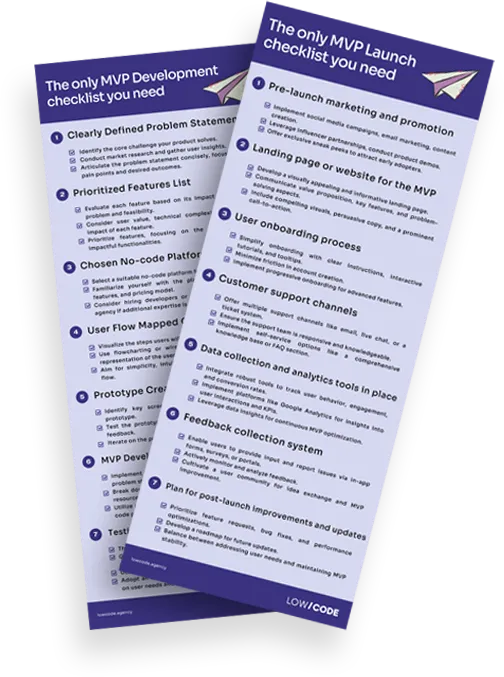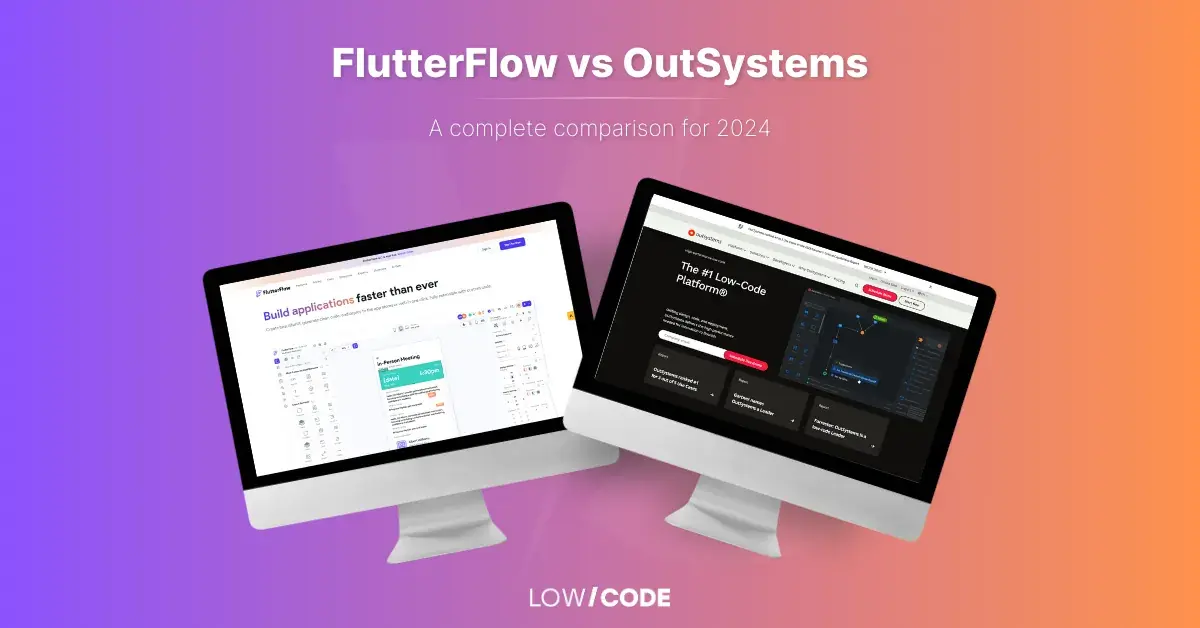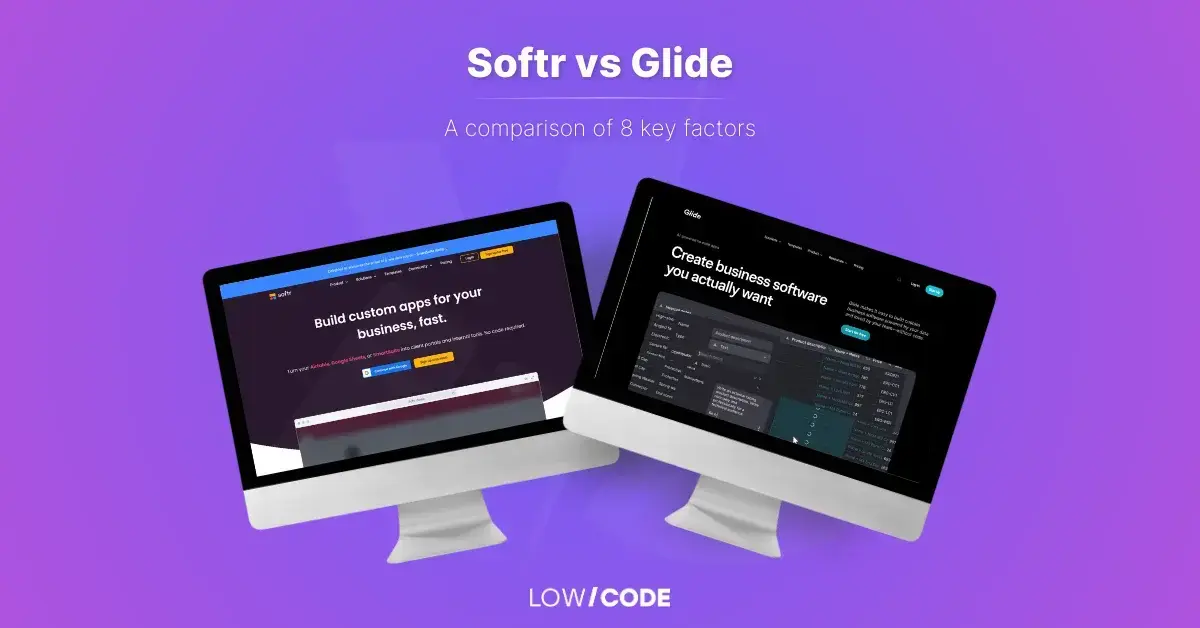
Evaluating FlutterFlow: Key advantages and limitations
Are you wondering about the pros and cons of Flutterflow? The platform promises to simplify the creation of mobile and web applications, but you surely want to know more about its features and possible drawbacks.
In this article, we'll take a closer look at what Flutterflow has to offer. We'll explore its collaborative features, its ability to span across different platforms, custom code support, and more. By the end, you'll have a comprehensive understanding of Flutterflow and its pros and cons, so stick around for all the insights!
TL;DR
In this in-depth exploration of Flutterflow's pros and cons, some of its most noteworthy strengths come to light. Notably, Flutterflow offers the flexibility of custom code integration, offering flexibility to enhance and customize applications. Moreover, it's one of the few no-code platforms that provides code export capabilities, allowing developers to download and modify the generated code.
What is Flutterflow?
Flutterflow is a no-code development platform. No-code platforms eliminate the need for manual coding by providing visual interfaces for designing and building apps. This is achieved through a combination of pre-designed components, templates, and a drag-and-drop interface. Flutterflow in particular specializes in the development of native mobile applications for both Android and iOS, as well as responsive web applications.
Flutterflow is closely associated with the Flutter framework, an open-source UI software development toolkit developed by Google. Flutter is known for its exceptional performance and the ability to create natively compiled applications for mobile, web, and desktop from a single codebase. It uses Dart, a modern and efficient programming language, to build applications that deliver a native-like user experience.
The platform was developed by a team of software engineers and designers who recognized the potential of Flutter for app development and wanted to make it accessible to a broader audience. Flutter's rich set of widgets, extensive library of pre-designed UI elements, and strong community support have made it a compelling choice for developing cross-platform applications.
Let's take a closer look at the types of development Flutterflow covers:
Mobile app development
Flutterflow specializes in native mobile app development. The Flutter framework allows the creation of native mobile apps.
- Android apps: You can use Flutterflow to build Android applications. The platform generates APK files that are compatible with Android devices, ensuring your app runs smoothly on a wide range of smartphones and tablets.
- iOS apps: Flutterflow also allows you to create native iOS applications. It generates Xcode projects that can be compiled into fully functional apps for iPhones and iPads.
Responsive web application development
In addition to native mobile apps, Flutterflow extends its capabilities to responsive web application development. A responsive web app is designed to adapt and function across various screen sizes and orientations, whether it's on a desktop, laptop, tablet, or smartphone.

FlutterFlow pros
Native app development
As we previously mentioned, with Flutterflow you can reach users on both major mobile platforms, Android and iOS, using a single codebase. Native development means that your applications will be specifically designed and optimized for a particular operating system. Native apps offer optimized performance, direct access to device-specific features, a consistent user experience, and enhanced security.
In contrast, some alternative no-code platforms rely on third-party wrappers to create apps that can run on multiple platforms. While these approaches also offer faster development and code reusability, they may not provide the same level of performance, features or consistency as Flutterflow.
Rapid prototyping
Flutterflow's intuitive, no-code interface allows users to easily create and experiment with their app ideas. It serves as an ideal platform for brainstorming and visualizing concepts before diving into the actual development.
To make your design process even faster, Flutterflow offers a marketplace with pre-made templates and components: resources that can give users a head start in their projects. While the marketplace might have a relatively smaller selection of templates compared to some other no-code platforms, it still provides a good range of options, both free and paid.
Real-time collaboration
In Flutterflow, you have complete control over project access and editing permissions, making it a powerful tool for collaborative app development. You can manage who can access and edit your projects, including team members within your organization and external users. These are Flutterflow’s collaboration features:
- Access control: You can precisely control who can view and edit your projects. This means you can share your project with everyone in your team, invite external collaborators, and assign them roles that match their responsibilities.
- Role-based permissions: For effective collaboration, you can assign roles with appropriate permissions. For instance, you can grant editing privileges to team members actively working on the project, while others can have read-only access to observe progress and provide feedback.
- Real-time collaboration: Flutterflow facilitates real-time collaboration, where all changes are instantly visible to everyone involved. Multiple team members can work simultaneously on the same page or design system without causing interference. It's important to note that this feature is available exclusively for Teams and Enterprise Plans.
Cross-platform compatibility
Flutterflow offers robust cross-platform support, allowing you to target multiple operating systems with your application without the need for extensive additional coding. Here's how it works:
- Default Android, iOS, and web support: When you create a project in Flutterflow, the generated project can seamlessly run on Android, iOS, and the Web without requiring any extra effort. This out-of-the-box support streamlines the development process, enabling your app to reach a wide audience.
- Adding desktop support: To extend your app's reach to desktop platforms (e.g., MacOS, Windows, Linux), you can use the Platforms page. This is where you specify which platform you want to include in the generated project.
- Platform configuration: To add platform support, navigate to the "Settings and Integrations" section from the Navigation Menu, then go to "Project Setup" and select "Platforms." Here, you can enable the platform(s) you want to support. However, it's essential to note that enabling more platforms may require additional design adjustments to ensure your app functions optimally on larger screens.
Flutterflow cons
Customization limits on the platform
While Flutterflow offers a range of pre-designed components, customization can be limited for complex app designs.
- Tip to mitigate it: For more advanced customization, developers can include custom code. We’ll go through this in more detail in the next section.
Code export
Flutterflow offers the option to export your app's code, allowing you to work on it in external development environments. However, it's important to note that there is no direct means of importing modified code back into the Flutterflow environment. This one-way process can potentially create challenges, especially if you want to continue using Flutterflow's visual development features or collaborate within the platform.
- Tip to mitigate it: There are better ways of adding custom features without downloading your code:
- Use the custom-code editor: While you cannot directly import modified code into Flutterflow, the platform provides a custom code editor within the main.dart file of your app. This editor enables you to add specific functionalities and customize your app as per your requirements.
- Use custom actions: Flutterflow's editor allows you to add code snippets in the form of custom actions. While these custom actions must have no arguments, they provide a means to insert your custom code directly into the main.dart file, enhancing the functionality of your app.
- Edit the main.dart file: The main.dart file is a crucial component of your project, serving as the entry point for the application. You can edit this file to include anything in the main() function that Flutterflow doesn't yet support. This includes initializing third-party plugins, and libraries, and setting up system-level configurations like adjusting the status bar color or orientation.
Learning curve
Despite being a no-code platform, there is still a learning curve associated with Flutterflow, especially for those completely new to app development.
- Tip to mitigate it: Take advantage of the available tutorials and documentation to ease the learning process. Consider starting with smaller projects to gain confidence and skills.
Dependence on Flutter updates
As Flutterflow is based on the Flutter framework, it is subject to changes and updates in Flutter. This can lead to compatibility issues with older projects.
- Tip to mitigate it: Keep your Flutterflow and Flutter framework up-to-date and regularly check for any updates or changes in the ecosystem that might affect your project.
Comparative analysis
Let’s evaluate Flutterflow alongside popular alternatives: Glide, Bubble, Adalo, and Webflow.
- Cross-platform support:
- Flutterflow supports Android, iOS, Web, and desktop platforms. Desktop platform support may require additional design adjustments.
- Glide primarily focuses on mobile app development, lacking extensive web and desktop support.
- Bubble.io is primarily designed for web applications but has limited mobile app development capabilities.
- Webflow: Primarily focuses on web design and development, making it a suitable choice for web-based projects. While it offers responsive design for various screen sizes, it does not provide native app development capabilities.
- Adalo: Specializes in mobile and web app development, offering cross-platform support for both Android and iOS. This allows users to create applications that work on a range of devices.
- Collaboration and access control:
- FlutterFlow supports real-time collaboration, allowing multiple team members to work together. It is available for Teams and Enterprise Plans.
- Glide provides basic collaboration features but lacks real-time collaboration for extensive team projects.
- Bubble.io offers collaboration features, including sharing and access control.
- Webflow provides basic collaboration features but lacks real-time collaboration for extensive team projects.
- Adalo supports collaboration and offers access control options to manage permissions and roles within teams.
- Marketplace and templates:
- FlutterFlow provides a marketplace with pre-made templates and components. It offers both free and paid resources.
- Glide offers a marketplace with app templates and components, although the selection may not be as extensive as on other platforms.
- Bubble.io offers a marketplace with a lot of templates, plugins, and reusable elements.
- Webflow provides numerous templates for different website niches and e-commerce solutions.
- Adalo offers a marketplace with a variety of pre-made templates, components, and data sources to kickstart app development.
- Custom-code support:
- FlutterFlow: Offers the ability to add custom code directly into the main.dart file of your app using FlutterFlow’s editor, providing flexibility for specific functionalities and customizations. Users can integrate custom code to implement advanced features. Code export is also supported for more extensive coding outside the platform.
- Glide: While it primarily focuses on data-driven app creation, Glide does offer code extensibility. It provides a custom code editor to insert code snippets, allowing for more advanced customizations.
- Bubble.io: Supports custom code integration through its backend workflows, allowing developers to extend functionality beyond the visual builder. Bubble.io provides an extensive set of plugins and actions to implement complex logic and integrations.
- Webflow: Allows the injection of custom code into the HTML, CSS, and JavaScript of web projects.
- Adalo: Provides custom actions that allow for adding custom code to enhance app functionality. While it may not offer the same level of code extensibility as some other platforms, it still offers customization options for implementing specific features and integrations. The extent of custom code implementation in Adalo is somewhat more structured compared to more code-centric platforms.
Conclusion
In our exploration of Flutterflow, we've uncovered all the features that make it a valuable player in the app development arena. Flutterflow is a development platform with a versatile array of strengths. Its cross-platform support ensures that your applications can thrive on Android, iOS, and the web. The platform's unique feature set, including custom code integration, opens doors to endless possibilities for app enhancement and customization.
Flutterflow distinguishes itself by allowing developers to export code, a valuable tool for those who want to delve into the nuts and bolts of their applications. However, the one-way nature of code export means that once you venture into modifying code, you're navigating outside the Flutterflow ecosystem.
It’s absolutely important to be careful when it comes to project planning and understanding the implications of making manual modifications to the code. Incorporating custom code in Flutterflow can be a challenging task, requiring expertise and a deep understanding of coding. To ensure your app reaches its full potential, the best you can do is rely on professionals.
For app success, trust the experts. Reach out to us, an experienced Flutterflow development agency, for a consultation tailored to your project's specific needs. Let's build your app together!





%20(Custom).webp)











